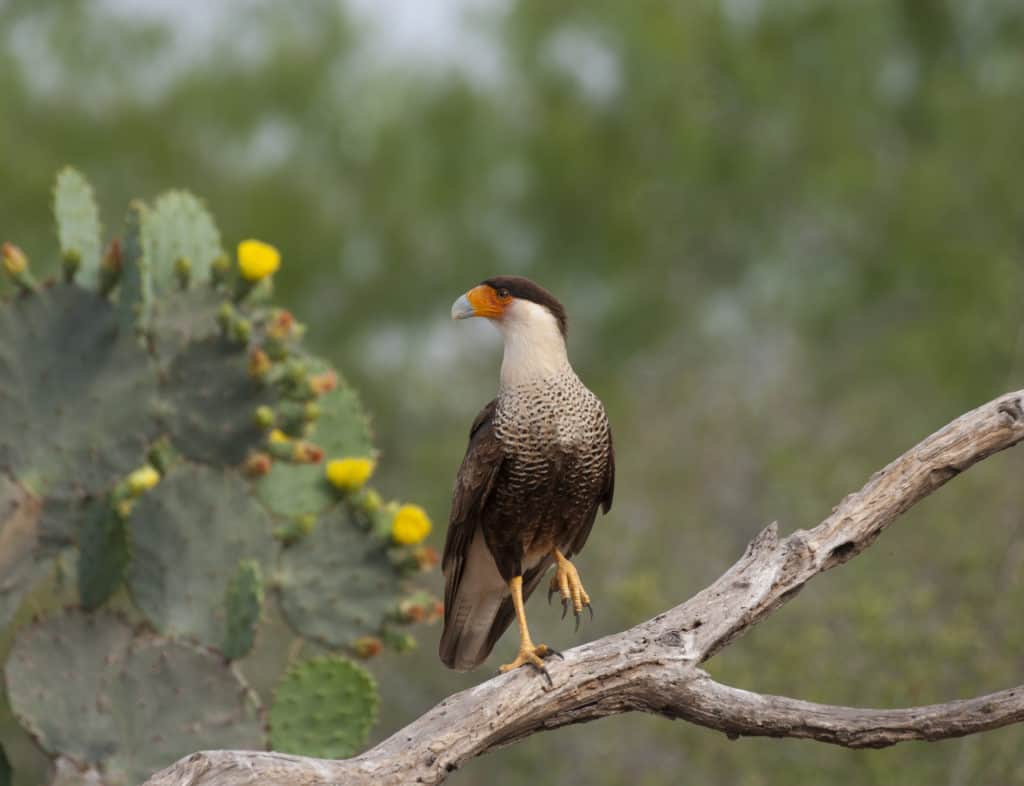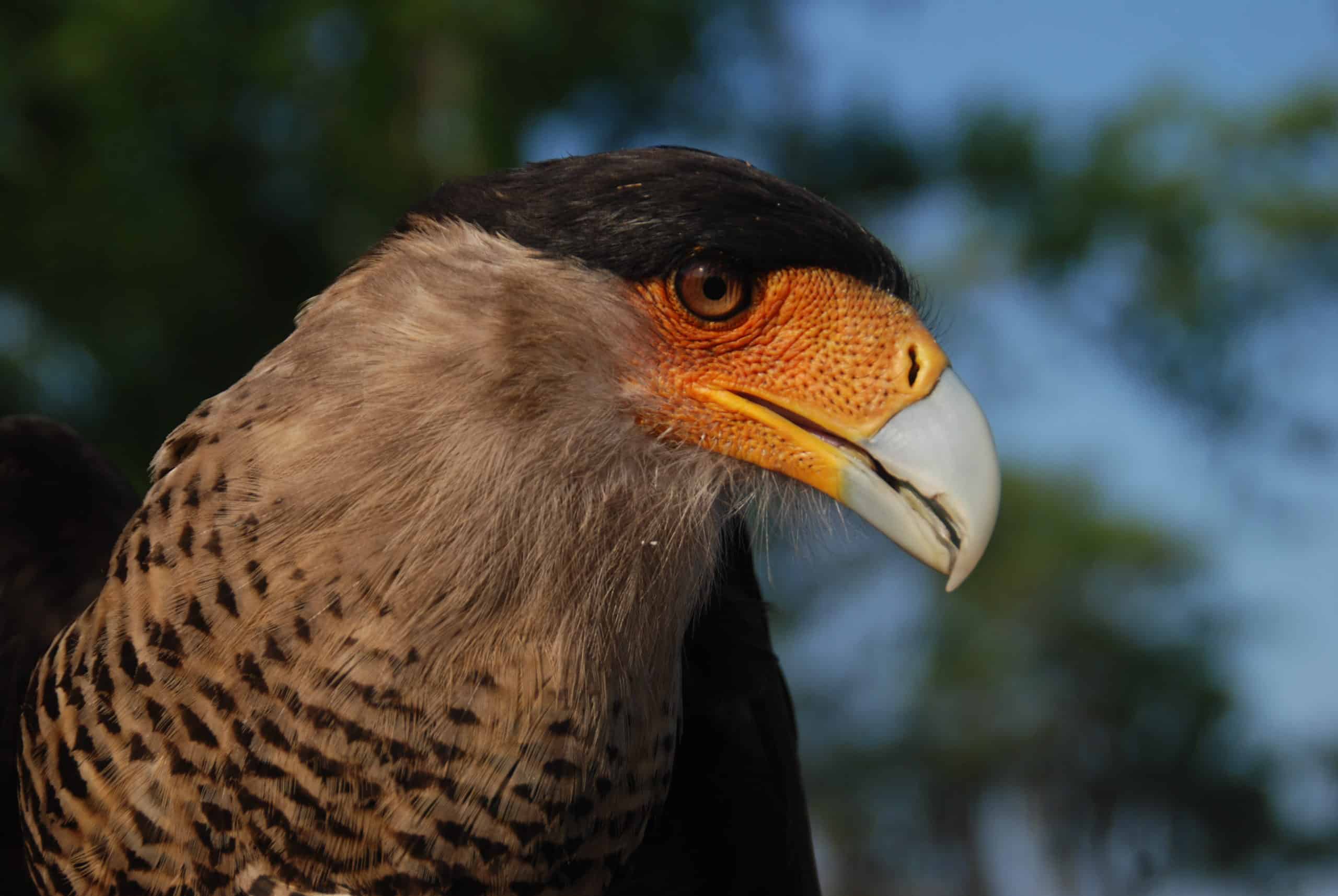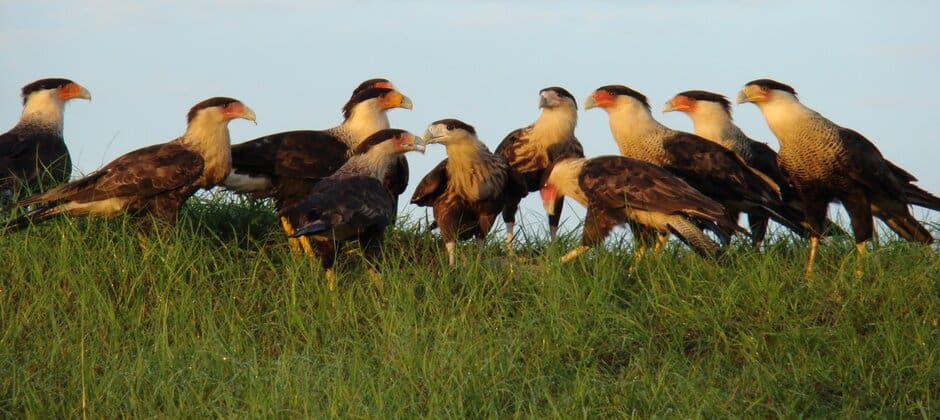Share this article
TWS2021: Florida crested caracaras are genetically distinct
Crested caracaras are found widely across the American tropics, but the species’ northern range pushes into some of the southernmost states in the U.S. While this falcon is relatively common in most of its range, the population in Florida is genetically distinct from its closest cousins in Texas and Arizona.
“They’re thought to have been isolated for a long time based on the fossil record,” said TWS member Natalie Payne, a PhD candidate in genetics at the University of Arizona about the crested caracaras (Caracara plancus) in Florida.
Payne will present her work at The Wildlife Society’s virtual 2021 Annual Conference, comparing the genomes of the crested caracaras found in Florida, Texas and Arizona.
The U.S. Fish and Wildlife Service has listed the crested caracara as threatened in Florida—the northern ones, formerly called Audubon’s crested caracaras before scientists determined all crested caracaras were the same species. The Florida population of crested caracaras faces threats of habitat loss due to urban development, persecution by humans, and vehicle collisions—the falcons often feed on carrion on roads, sometimes becoming roadkill themselves in the process.

Genome analysis revealed that Florida caracaras were genetically distinct from those in Texas like the one above. Credit: Patty Raney
Payne and her colleagues extracted genetic information from blood samples taken from crested caracaras Texas, Arizona and Florida. They found that while Arizona and Texas populations were closely related, the genome of Florida caracaras was different.
“Florida’s population of crested caracaras appears to be very distinct from the other populations we sampled,” Payne said.
Payne said there is also evidence of some inbreeding in the Florida caracaras, which is typical for an isolated and relatively small population. There are some indications that the Florida population is gradually losing genetic diversity. Estimates showed the effective population size is about 1,000 individuals, though the actual numbers could be higher, Payne said.

Crested caracaras are considered federally threatened in Florida. Credit: Isabel Gottlieb
Future research should look at the way that Central and South American crested caracara populations are related to the ones north of the U.S. border, Payne said, to get a better understanding of the species as a whole. In the meantime, managers may want to use information on the genetics distinctness of Florida birds when making future management decisions, she said.
Conference attendees can visit office hours for this contributed paper on Thursday, Nov. 4 from 1 p.m. to 2 p.m. to learn more and ask questions.
Header Image: A group of crested caracaras feed in Florida. Credit: James Dwyer








